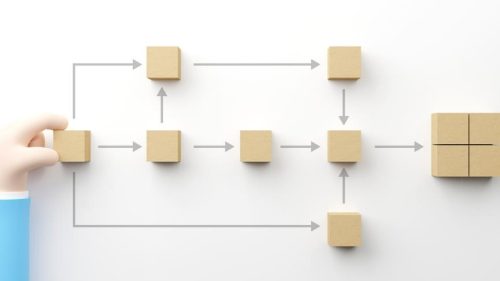Businesses rely on strategic business plans that help them make informed decisions leading to a thriving future. There are several ways businesses perform their daily functions – from in-house meetings to brainstorming sessions and everything in between to keep the entire team aligned, which is why companies opt for flowcharts.
Whether your business is creating flowcharts from scratch or using an online flowchart maker, the benefits of using flowcharts are endless. It not only helps with completing daily projects but also accelerates the decision-making process.
According to a Gartner report, 80% of enterprises executing projects with the help of flowcharts achieve an expected internal rate of return increase of 15%.
This article will talk about the importance of creating a flowchart and how your business can create a strong flowchart for your business processes.
How Businesses Can Use Flowcharts To Improve Their Processes?
Importance Of Flowcharts
Businesses use flowcharts for a number of different processes. Proper creation of flowcharts can go a long way and help you in the following situations:
1. Internal Audits

Meeting company standards is essential if a business hopes to keep operating. Flowcharts are implemented to ensure that your business operations are aligned with the vision and mission, which further creates clear guidelines for all your employees.
2. Standardizing A Process
Documentation is important, but it can end up taking plenty of time. Hence, to help employees and stakeholders understand the process in a condensed manner, flowcharts play a huge role. It not only simplifies the business process making it easier to understand but also makes sure that there are no inefficiencies within the process.
3. Training Employees
Employee training plays a vital role in business operations and must be conducted from the time of the employee’s onboarding. The massive book of employee manuals seems intimidating and cumbersome to read. On the contrary, businesses can leverage flowcharts to simplify their business operations.
4. Improving A Process

Several business processes are tried and tested, which help streamline complex operations and procedures. That being said, with the help of flowcharts, you can enhance efficiency and better analyze each business process while working on figuring out any and all bottlenecks.
5. Communication
Flowcharts offer a better explanation of business aspects with the aid of visualization. This takes it leagues above narrative text in company manuals and process books. Indeed, when it comes to acquiring a better understanding of the business process, one thing is for sure, businesses need to use flowcharts.
Steps For Creating A Flowchart
Flowcharts and business process management can go a long way to grow your business. According to Gartner, 95 percent of Business Process Management initiatives are successful as they grow their project delivery rate by 50%. You must take the right steps toward creating an effective flowchart allowing your business to create an edge in today’s competitive world.
1. Determine The Main Components Of The Process

The first step is to determine the steps to your business process by defining what comprises the process. One must also create a clear stream of inputs, procedures, and outputs for a strong flowchart illustration.
2. Design The Flowchart
The next step is to sort business activities according to their priority. The best approach is to follow a chronological order to avoid any confusion. The better the chronology of the flowchart, the easier it will be for your employees to understand business processes which helps in business growth.
3. Choose The Correct Symbols For Each Activity
Flowcharts are heavily dependent on symbols. While it may look like simple shapes, each shape depicts a certain process. Therefore, it’s essential to understand each symbol’s meaning to use them correctly to make the most out of your flow diagram.
4. Make The Connection Between The Activities

Once you have understood all the symbols, the next step is creating a connection. Flowcharts take the help of lines and arrows to guide the reader with the flow and to make sense of it.
5. Indicate The Beginning And End Of The Process
While it may seem like a pointless step, indicating the start and the end of the flowchart is essential. Some flowcharts can get really complicated; therefore, in order to avoid confusion, one must always highlight the starting and ending point.
6. Review Your Flowchart
Once you have completed your flowchart, the final step is to review it. Often, one forgets to include a step or add a line or symbol. Reviewing your flowchart allows users to make necessary tweaks to create an understandable flowchart.
Conclusion
Flowcharts are simply one thing a business can’t survive without , as they help with graphical representation and tracking of business processes, even small business should use flowcharts to improve their business process. A study by Lukasz Tartanus of Procesowcy found that only 4% of organizations monitor and track their operations through flowcharts.
Whereas it’s the easiest and quickest way to track your processes and help explain them to new and existing employees.







